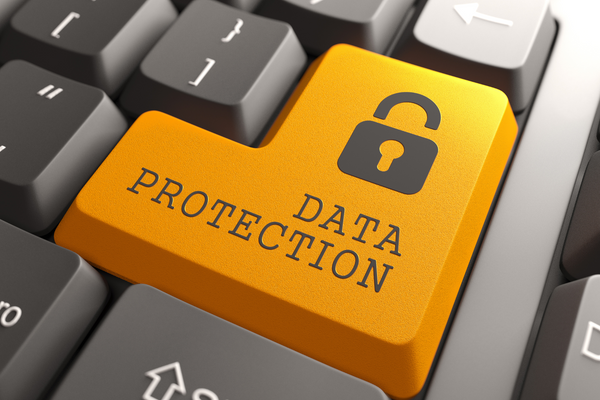
Contractual Data Safeguards are a series of legally binding protocols and policies designed to ensure the security and confidentiality of data exchanged in business agreements between two or more parties.
Knowing how to properly define the scope, draft, and negotiate contractual safeguards is especially vital when you deal with vendors within the EU or other regions with standardized clauses. Contracts ensure that your needs as a business are formally written down so that any third party engaging with you can adequately handle any data you hand over for processing.
At Captain Compliance, we specialize in helping businesses become compliant with any data regulations needed. By the end of this article, you will better grasp the elements, systems, and clauses that make up contractual measures for any third-party vendor business agreements.
Key Takeaways
Contractual Safeguards Facilitate Legally Compliant Data Sharing: This means that all parties involved in dealing with sensitive consumer information along its entire data lifecycle must handle said data responsibly, adhering to predetermined standards.
Implement Standard Contractual Clauses – They offer a framework for transferring personal data beyond certain regions, aligning with laws like the EU’s GDPR when it comes to Standard Contractual Clauses (SCCs).
Have Diverse Data Protection Measures – Encryption, strong password policies, multi-factor authentication, and routine compliance checks collectively boost security, reducing risks of unauthorized access and data breaches.
Understanding Contractual Data Safeguards
Securing Success Contractual Data Safeguards for Robust Data Protection in Business Agreements (1).png

Contractual Data Safeguards are integral in business contracts as they help secure data handling and offer protection by their inclusion in agreements as a necessity from a legal and compliance viewpoint.
Such safeguards are essential to achieve regulatory and corporate compliance as they typically impose specific requirements and standards, such as the California Privacy Rights Act (CPRA).
Requisites to Drafting Data Safeguards
Before we proceed further, it’s essential to underline that your business should have a clear data mapping process that can categorize and sort vital data and put the needed safeguards in place to protect it.
Data mapping helps in this regard as most data handling regulations mandate how personally identifiable information (PII) is handled after being gathered from consumers. This means that if you store consumer data such as unique identification numbers, biometric data, and financial or medical records, it’s mandatory to have stringent guards in place before handling such data.
If you wish to read further on the topic of data mapping, we have a detailed guide on crafting a robust data mapping strategy.
These steps occur even before drafting a contractual data safeguard for third parties. After your data has been adequately mapped and sorted, you now have better access to what will be distributed for processing to your business partners and data handling parties.
What are the 12 Elements of a Data Safeguard Contract?
A Data Processing Agreement (DPA) or Data Safeguard Contract clearly states in a written manner and defines concepts such as ownership, what constitutes company data, use rights, and provisions for access, return, and retention.
In some cases, more advanced processes, such as legal holds, are put in place in case a need arises.
Here are some important components to keep in mind when drafting your first data safeguard agreements:
Introduction and Definitions:
Clearly define the parties involved (data controller, data processor) and key terms used throughout the agreement to ensure a common understanding.
Be wary of using the proper language and terms, as they might hold varying meanings in the eyes of the judicial system and data governing bodies.
Scope and Purpose:
Clearly outline the scope of the agreement and specify the purposes for which the personal data will be processed.
This section should align with the original agreement between the parties. Having a data compliance framework is one of the first steps to take to make the process smoother sailing.
Roles and Responsibilities:
Clearly define the roles and responsibilities of the data controller and data processor. This includes specifying the tasks each party is responsible for in relation to data processing.
Data Categories and Data Subjects:
Identify the categories of personal data that will be processed and the categories of individuals (data subjects) to whom the data pertains.
Data Processing Instructions:
Detail the instructions provided by the data controller to the data processor regarding the processing of personal data.
The data processor should only process the data according to these documented instructions.
Confidentiality and Security Measures:
Include provisions outlining the measures the data processor will implement to ensure the security and confidentiality of the personal data.
Cover details about your business partners’ encryption methods, access control handling, regular security assessments, etc.
Data Breach Notification:
Specify the obligations of the data processor to notify the data controller in the event of a data breach.
Include details on the timeframe within which such notifications must be made.
Subprocessing:
If the data processor engages sub-processors, outline the conditions under which this is permitted and the obligations of the data processor to ensure that sub-processors comply with data protection requirements.
Data Subject Rights:
Specify how the data processor will assist the data controller in fulfilling its obligations regarding data subject rights, including access, rectification, erasure (Art. 17 of the GDPR), and objection.
Data Transfers:
If applicable, address any cross-border transfers of personal data and specify the mechanisms used to ensure compliance with data protection regulations for such transfers.
Audit and Compliance:
Outline any provisions for audits or assessments by the data controller or third parties to ensure compliance with the agreement and relevant data protection laws.
Term and Termination:
Define the duration of the agreement and the conditions under which it can be terminated by either party.
Common Data Risks in Business Agreements
Securing Success Contractual Data Safeguards for Robust Data Protection in Business Agreements (2).png

In business contracts, data risks primarily arise due to how businesses handle vast data collection, storage, analysis, and sharing. Choosing to outsource compliance can be a great way to get expert opinions from a legal standpoint and learn which data regulations you must adhere to.
Let us look at some real-world examples of data breaches in 2023 that could have been prevented with proper data safeguards:
Shields Healthcare Group: This Massachusetts-based medical services provider experienced a data breach involving unauthorized access to a wide range of sensitive patient information, affecting approximately 2.3 million people. The breach had far-reaching consequences, impacting 56 facilities and their patients.
UK Electoral Commission Data Breach: This breach involved unauthorized access to internal emails, control systems, and copies of electoral registers containing voter data. The registers held names and addresses of UK voters registered between 2014 and 2022, potentially impacting about 40 million individuals.
T-Mobile Data Breach: In September 2023, T-Mobile experienced a significant data breach involving employee and customer data exposure, with the potential compromise of millions of customers’ data. This incident underscored the persistent cybersecurity challenges faced by large corporations.
Indonesian Immigration Directorate General: Over 34 million Indonesian citizens had their passport data leaked following unauthorized access to the Directorate’s systems. The breach involved sensitive data, including full names, passport numbers, and dates of birth.
MOVEit Transfer Software Breach: A zero-day vulnerability in MOVEit Transfer software was exploited by the ransomware and extortion gang “cl0p,” impacting over 1,000 organizations and more than 60 million individuals. The breach affected a variety of sectors, including financial services, healthcare, IT, government, and even the defense sector.
What are the Common Risks, and What Safeguards Exist for Contractual Data Protection?
Businesses should ensure that their service providers employ industry-standard security practices, such as encryption and access controls. Regular vulnerability assessments should also be a part of these security measures to protect data from unauthorized access and breaches.
An eye-watering 19% of data breaches occurred due to a compromised third-party vendor, which resulted in a slew of legal penalties, fees, reputational damage, and other repercussions.
To avoid such disastrous circumstances, let’s try to understand what risk we are trying to mitigate with a data safeguard contract.
Unauthorized Access and Disclosure:
Risk: Unauthorized individuals gain access to personal data, leading to potential data breaches and unauthorized disclosure.
Safeguard: Contractual provisions specifying access controls, encryption, and confidentiality measures to restrict access to authorized personnel only.
Data Breaches
Risk: The accidental or intentional release of personal data due to security vulnerabilities, leading to unauthorized access, use, or disclosure.
Safeguard: Contractual clauses addressing data breach notification requirements, outlining the procedures for reporting and responding to data breaches promptly.
Non-Compliance with Data Protection Laws
Risk: Failing to comply with relevant data protection laws and regulations, leading to legal consequences and potential fines.
Safeguard: Inclusion of contractual clauses that ensure adherence to data protection principles and requirements, aligning with applicable laws such as GDPR, CCPA, or others.
Inadequate Security Measures
Risk: Insufficient technical and organizational measures to protect personal data, increasing the risk of data breaches and unauthorized access.
Safeguard: Contractual provisions specifying the security measures and controls to be implemented by the data processor, including encryption, access controls, and regular security assessments.
Unintended Data Use
Risk: Processing personal data for purposes not originally intended or beyond the scope of the data subject’s consent.
Safeguard: Clear contractual terms defining the purposes of data processing and limiting the use of personal data to those specified purposes.
Vendor and Third-Party Risks
Risk: Risks associated with third-party data processors or vendors not adequately protecting personal data. At Captain Compliance, we offer custom-tailored data compliance solutions and can help you conduct a third-party risk assessment.
Safeguard: Contractual clauses addressing the use of sub-processors, requiring the data processor to ensure that subcontractors comply with data protection obligations.
Lack of Accountability and Auditing
Risk: Insufficient measures for ensuring accountability and monitoring compliance with contractual and regulatory requirements.
Safeguard: Contractual provisions allow the data controller to conduct audits or assessments to verify the data processor’s compliance with the agreement and applicable data protection laws.
Best Practices for Implementing Contractual Data Safeguards
Securing Success Contractual Data Safeguards for Robust Data Protection in Business Agreements (3).png

Adapting Contracts to Evolving Data Protection Laws:
As regulations like GDPR and other privacy standards evolve, it’s important that contracts reflect these changes to ensure ongoing compliance.
Here are some of the steps you can proactively take to tackle privacy law changes going into
Regularly update contractual terms to align with changes in data protection laws.
Engage with legal experts specializing in data protection and privacy laws for regular reviews of your contracts.
These experts can provide insights into the implications of new laws and how to effectively integrate them into existing agreements.
We offer specialized compliance solutions to help you navigate regulations like the GDPR if you deal with employee data within the EU.
Revisiting and Updating Safeguards Based on Changing Business Needs:
Continuously assess the scope and types of data involved in service agreements. This involves understanding the sensitivity of personal data and adjusting safeguards accordingly.
Work closely with service providers and business partners to ensure that their practices and contractual commitments also align with the latest data protection standards.
Foster a culture of compliance and transparency, encouraging open communication about data protection practices and legal requirements.
Define company and personal data broadly in contracts, considering all possible forms and categories of data that might be included in the services provided.
Educating Employees on the Importance of Contractual Data Safeguards:
Implement training programs that focus on the importance of data protection and the specific obligations outlined in contracts. This includes awareness of how to handle sensitive data and the consequences of breaches.
Regularly update training content to reflect changes in laws, regulations, and business practices.
Ensuring a Company-Wide Understanding of Data Protection Responsibilities:
Create a culture of data protection awareness across the organization. This involves making sure that all employees, not just those in IT or legal departments, understand their role in safeguarding data.
Use practical examples and real-life scenarios in training to help employees understand the application of data protection principles in their daily work.
Closing
We hope that this article has given you a better understanding of why contractual data safeguards are essential when conducting business with any third-party vendors.
Our primary mission at Captain Compliance is to help businesses of any industry or size become compliant with any data protection laws and regulations.
Contact us to discuss your business’s roadmap towards safe data handling practices and help with data safeguard implementation.
FAQs
What Are Contractual Data Safeguards?
Contractual Data Safeguards are legally binding agreements that dictate the handling, storage, and sharing of data within business contracts.
These safeguards set the foundation for data security and compliance, ensuring adherence to data protection standards.
Having an accountability framework is a great first step to begin your data safeguard process.
Read more on our guide for What is an Accountability Framework? (The Complete Guide)
What is Data Protection in a Contract?
Data protection in a contract refers to clauses and terms in business contracts that ensure the secure handling and protection of sensitive data. These include measures to prevent unauthorized access to data breaches and ensure compliance with data privacy regulations.
Read more on the topic of Data Protection Compliance Services: Which is Best?
What are Standard Contractual Clauses in Data Protection?
Standard Contractual Clauses (SCCs) are model data protection clauses approved by regulatory bodies.
They provide a framework for transferring personal data outside the European Economic Area, ensuring the data is safeguarded according to EU standards.
Read our guide to GDPR Data Inventory Protection and Compliance Guide.
What are Examples of Data Protection?
Examples of data protection include implementing encryption technologies, setting password policies, multi-factor authentication, regular audits, and compliance with regulations like GDPR.